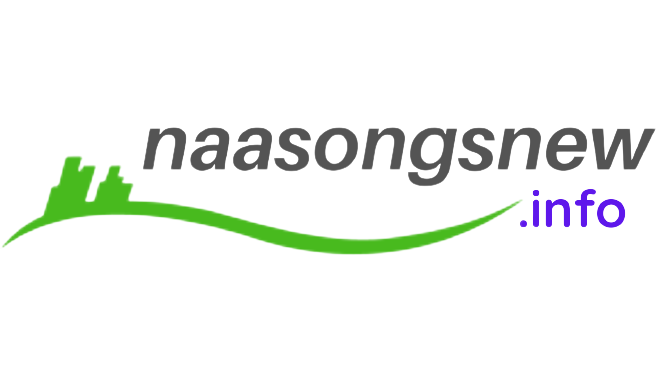Technology and its users across the globe were amazingly quick to adapt to the disruptive change brought about by the pandemic. With the sudden workplace transformation, the digital world fast-forwarded to what seemed like a far-fetched reality almost overnight. In no time, a geographically dispersed workforce enabled by cloud-based technology became an operational model. But the rapid transformation did not halt with the overnight shift to the remote working model. The need for a flexible working arrangement called for another transition to the hybrid workplace model. Some of the best hi-tech hybrid workspaces in high–performing companies are meticulously created by dynamic and agile IT support. The rapidly changing course of events challenged the IT sector to bring out its best resources to cater to the demands of the evolving work culture. The concept of a hybrid workplace being a mix of onsite and remote working sounded like the ideal workplace for the future. However, building a successful hybrid model meant a holistic workplace transformation – but most importantly a ‘Digital transformation’.
Information Technology (IT): The Backbone of a Hybrid Workplace
With the emergence of the hybrid working model, Information Technology has come to the forefront of the digital revolution. Companies have realized that managing distributed teams are more than strictly complying with a standard work management policy for all employees. Hybrid workplaces can only be successful if the management caters to the diverse needs of the distributed workplace. For this, IT needs to evolve and be agile to the changing business needs. Today, IT is the key to enhancing the digital employee experience and team productivity. Undoubtedly, technology has been an efficient mediator for dispersed teams to communicate and collaborate during a crisis. The role of IT in facilitating connectivity was crucial to keep companies afloat.
As the world transitions to hybrid working, the role of IT goes beyond enabling virtual team connections and information management. Now, smart offices are being designed to foster both in-person as well as virtual connections. Smart appliances are installed in conference rooms to encourage a meaningful and seamless team meeting experience no matter where the participants are located.
IT plays a significant part in paving the way for the ‘productivity anywhere’ concept by minimizing the gap between onsite and remote employees. With remote servers and cloud technology services, it is now easier to access important files and resources from any location. Apart from connectivity, data and information security is indispensable now more than ever. There has been an exponential rise in cyberattacks in the past few years. Protecting the company network with advanced digital security measures has been a high priority need for most companies with remote working employees.
Automation is another key benefit of IT. With the help of automation, employees can be relieved from the monotony of performing mindless tasks and instead make use of their efforts for creative and innovative endeavors.
Modern workplaces are largely powered by IT-driven solutions. The right use of Information Technology can help in building a highly engaged, well-connected, and productive hybrid workforce.
How has IT advanced to empower a hybrid workplace?
- 1. The rise of Hybrid Cloud Adoption
On-premises data centers are commonly used to store and manage high volumes of data. With the advent of hybrid working, on-premises data centers made it difficult to access information remotely. Organizations have started to increasingly rely on public and private cloud-based applications instead. Although cloud technologies are cost-effective, they do not offer sufficient security and a centralized system for data management.
The benefit of setting up a Hybrid Cloud is that it provides a unified platform to access data stored on public and private clouds as well as on-premises centers from anywhere. This provides businesses with ample flexibility to undergo a workplace transformation by combining cloud infrastructure with the existing on-premise data centers.
Transitioning to a unified communications infrastructure can enhance productivity. While it allows multiple users to access, Hybrid Cloud also provides security to enterprise data. The IT department of an organization is responsible to ensure a smooth transition from legacy systems into unified infrastructure systems, monitoring any problems that arise in the process.
Adopting a Hybrid Cloud modernizes network security and offers the capability to work on multiple clouds for effective teamwork
- 2. Strengthening Cybersecurity with the help of Artificial Intelligence (AI)
The rate of cyber-attacks on organizational data spiked when the global workforce began to function remotely. Accessing data and applications via public networks, clicking on unverified links and phishing attacks are some of the ways in which employees succumbed to cyber-attacks. Many companies use patch management procedures to remove susceptible software vulnerabilities and bugs. Patching also ensures that all the applications and systems are updated regularly. However, patching is only a temporary fix. Many companies follow a ‘Bring Your Own Device’ policy (BYOD) that allows employees to use their devices for work to reduce costs. However, Crowd Research’s study found that 72 percent of companies cite data leakage as the top security concern for BYOD.
With an increasing number of digital assets to be protected and cyber-attacks becoming sophisticated, it is time to go beyond basic security technologies and best practices to protect the digital estate of the company.
Artificial Intelligence (AI) helps cyber analysts in the smart detection of cyber threats. With AI, cyber professionals get insights into potential weaknesses in the corporate IT system, enabling them to reinforce cyber security faster. AI-powered data security solutions also play a crucial role in end-point data protection by encrypting sensitive information. A Gartner’s Trend study suggests that by 2024, 75 percent of businesses will shift from piloting to operationalizing AI, driving an exponential increase in streaming data and analytics infrastructures. As organizations normalize hybrid working, employees working from remote devices from off-premises locations have increased. With the help of AI, a comprehensive record of employee devices can be maintained, monitoring them regularly for potential vulnerabilities.
Today, cyber security needs collective effort from IT, online behavioral changes from employees, and using the right data protection software. Since remote employees are outside the safety of the office where the possibility of breaches of data security is at its highest, strong IT support is imperative to prevent violation of data integrity.
Employees in a hybrid workplace must be provided with awareness training on online safety protocols to be adhered to. Many companies follow a Zero trust policy – a stringent measure to ensure that no external data is visible to users without multi-factor authentication and granting access. Penetration testing is an automated cyberattack launched against the network to spot vulnerabilities and system misconfiguration in the system. It has helped companies to know the weak areas in their system so that they can invest in the right technology and secure their system against the danger of being hacked.
- 3. IT department as a proactive partner in the digital transformation process:
In a hybrid workplace, IT cannot function as a separate unit. Rather, its strength and support can only be utilized if the department works alongside the employees and department leaders. To offer maximum flexibility and a highly secure framework, IT needs to be prioritized by the top management in every decision made for a hybrid workplace. A comprehensive budget must be laid out considering the digital requirements of employees at every level. While inadequate technological support kills creativity and productivity, studies report that an overload of technologies is a reason for employee burnout. To understand the right technical needs of the organization, IT must be roped in on every step of building a smart hybrid workplace – from HR policies to the operational activities of every department.
The role of the IT department is to ensure a smooth transition and routine maintenance of the hybrid infrastructure. It assesses the functions and investment budget to implement automated solutions to facilitate a seamless working environment for every employee – onsite and remote alike.
- 4. AR to foster engaging training experiences and visualized problem-solving
While AR is an expensive investment, it is a transformational development in IT that can change the future of work. Augmented Reality (AR) combines the real world with digital components. The sudden change of events in the past few years has created a need for interactive technologies to empower an engaged hybrid workplace. Meeting fatigue and a dearth of virtual training technologies have resulted in low employee engagement. Using AR to create better learning experiences can make training interesting as well as simplified for both employers and employees including new hires. Another benefit of AR is its remarkable visualization capabilities. This feature is especially helpful in fields such as the construction industry which requires a real-time model of the work-in-progress. With Augmented Reality, the task of problem-solving becomes easier and it also helps bring alignment of thought within a team.
IT: The Agile Facilitator of a Hybrid Workplace Technologies
Designing a hybrid workplace requires an accommodative approach to cater to the expectations of the employees while meeting the cost and security requirements of employers. IT has played a significant role in amalgamating onsite and remote working experiences for teams. IT continues to develop to combat new challenges in workplaces with the use of AI. For the sake of long-term benefit, organizations must invest in the right set of technologies and top-notch data security solutions to drive high employee engagement and enhance team productivity.
 Naa Songs
Naa Songs





